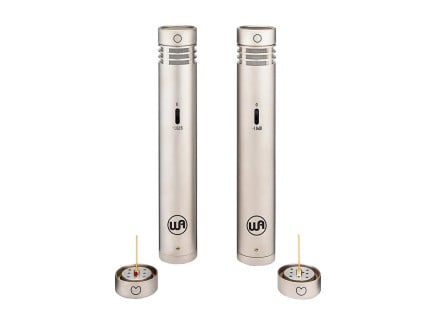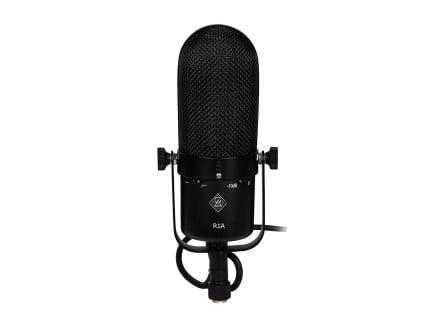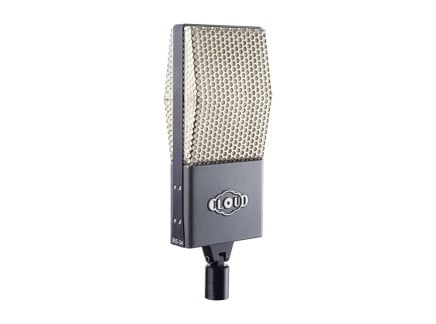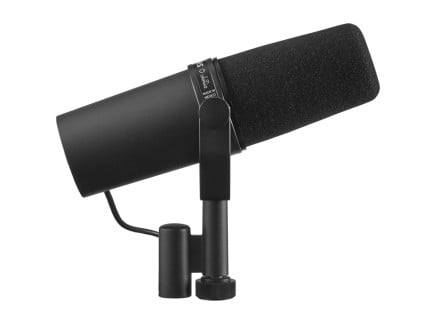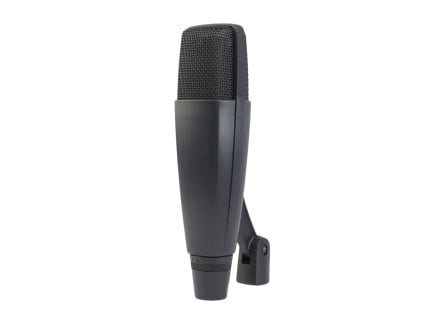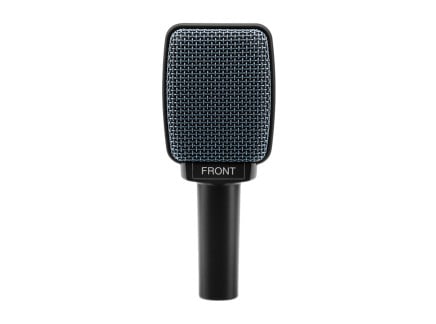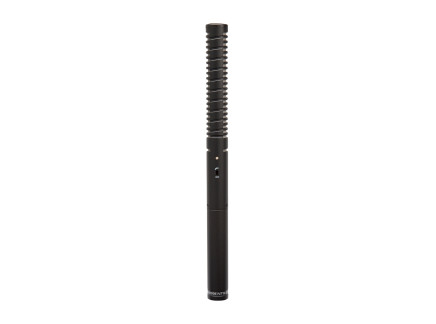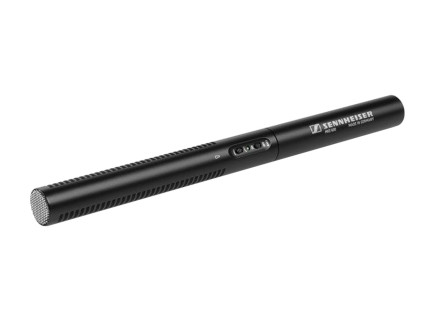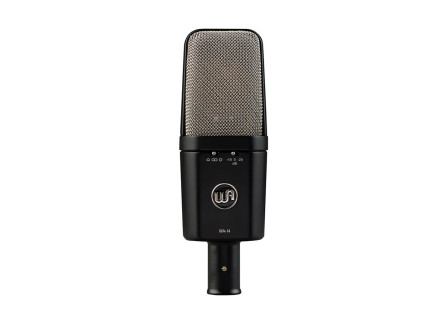If you have ever purchased a microphone or perhaps looked up a spec sheet online, you have likely come across a chart with an odd shape outlined inside of it—this is known as a polar pattern (or a pickup pattern). But...what is a microphone polar pattern after all? What does this chart mean, and why is it useful? In short, a polar pattern is a representation of a microphone's sonic sensitivity at different angles relative to its central axis, or simply put—it shows us the angles at which a microphone picks up sounds best, and from which angles sound is rejected.
This information is very important, as it enables us to make better decisions for a particular recording and/or sound reinforcement situation. In the world of studio recording or live performance, this can save time, money, and the health of our precious nerve cells. Equipped with an understanding of basic mic specifications, we can find the best mic for every job, and we can position it with greater ease, allowing us to capture the desired source at the best sound quality while minimizing feedback and unwanted background noise.
For this article, we'll focus on eight common, standard pickup patterns: Omnidirectional, Bidirectional, Cardioid, Subcardioid, Supercardioid, Hypercardioid, Lobar/Shotgun, and Boundary/PZM. Each of these shapes is particularly well-suited for some specific miking situations, and as such it is important to get to know them more deeply. And of course, we recommend brushing up on your knowledge of microphone operational principles as well—understanding the difference between dynamic, condenser, and ribbon mics will prove helpful along the way.
Some Things To Consider
Before we dive deeper into the particularities of each polar pattern, we also need to discuss a few more concepts. First, it is important to note that although in many cases the graph depicting a polar pattern is filled with a nearly perfect shape, in reality, directionality is actually frequency-dependent. In fact, all microphones tend to become more directional at lower frequencies, and less so at higher frequencies. For this reason, a more accurate graph will display a polar pattern with several frequency-specific alterations to its shape. Throughout this article, we'll reference polar pattern diagrams from AKG's C414 XLS—specifically because it does such an excellent job of showing how its polar pattern differs in several frequency ranges. The image below shows some of our basic polar patterns (thanks Shure for the helpful diagram!).
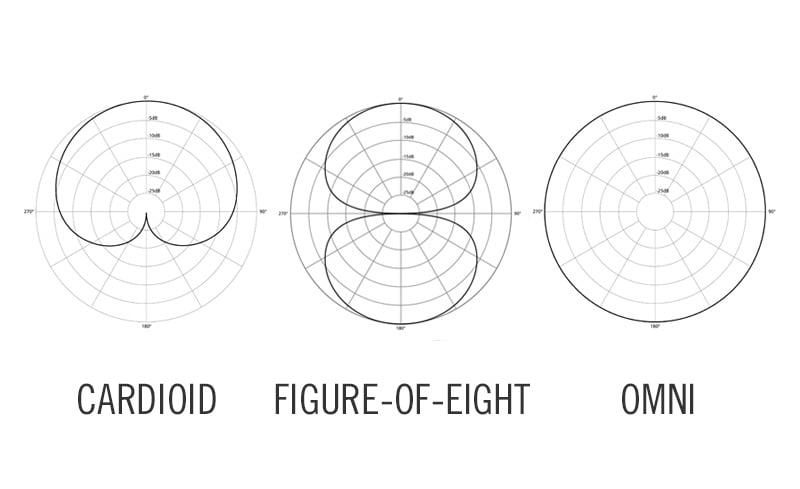
Another important thing to consider: how does a 2-dimensional image translate into a 3D space? The 0º point marked on a graph is known as an on-axis relationship—referring to an imaginary axis positioning a hypothetical sound source perpendicularly to the front of the microphone's diaphragm. Any other position of the sound source in relation to the diaphragm is called off-axis; off-axis positioning causes a change in the frequency response of the microphone referred to as off-axis coloration. Additionally, the two-dimensional shape you see on a polar pattern diagram is actually a three-dimensional shape in reality—so it is also important to take into consideration a mic's response to sounds coming from above and below, as well.
Depending on the microphone design, the "on-axis" response may be positioned at seemingly different points on the mic's housing—after all, this "axis" is established relative to the diaphgragm, and not the mic's chassis. Here, the notions of front-address (aka top-address), and side-address come into play. Front-address microphones are most sensitive to sounds that their chassis is pointed toward: handheld microphones like Shure's SM58, pencil mics such as Neumann's KM 184, and shotguns like Sennheiser's MKE 600 are typically front-address. By this logic, side-address mics most commonly have their on-axis line directly to the side of the grill. Large-diaphragm condensers like Lauten Audio's Clarion FC-35, and ribbon microphones like Avantone's CR-14 more often than not fall into the side-address category.
One more critically important concept that needs to be taken into account to better understand polar patterns is the difference between two acoustic principles: pressure and pressure-gradient. Pressure microphones have one side of their diaphragm open, and the other side closed in a fixed pressure system. This is the principle applied in the designs of nearly all omnidirectional microphones. On the other hand, pressure-gradient microphones have both sides of the diaphragm open at least partially. When both sides of the diaphragm are fully open, a figure-of-eight polar pattern naturally emerges—and the rest of the directional polar patterns are formed by partially covering one of the sides of the diaphragms. As such, pretty much all of the directional microphones are based on the pressure-gradient principle. It is also crucial to note here that all pressure-gradient microphones are subject to proximity effect—a phenomenon which causes a progressive boost in low frequencies as a sound source gets closer to the microphone. It is also possible to combine pressure and pressure-gradient principles acting at the same time, which leads to the emergence of other polar patterns. For example, an equal mixture of true pressure (omnidirectional) and true pressure gradient (bidirectional) principles can be employed to yield a cardioid polar pattern.
Lastly, we need to introduce the concept of acoustic labyrinths—specially designed pathways and series of ports placed inside of a microphone's capsule to delay the sound from reaching the rear of the diaphragm. These are often used in non-true pressure, and pressure-gradient microphones to achieve unidirectionality with a single diaphragm.
Polar Patterns Explained: Omnidirectional
The omnidirectional polar pattern resembles a nearly perfect sphere surrounding a mic's capsule (shown as a circle on a graph). Microphones exhibiting this pattern pick up sounds from every direction equally well. As mentioned in the previous section, most omnidirectional microphones operate on the pressure principle, however, in cases of multi-pattern microphones (such as AKG's C414), omnidirectionality is achieved by combining two cardioid patterns, and thus these use the pressure-gradient principle.
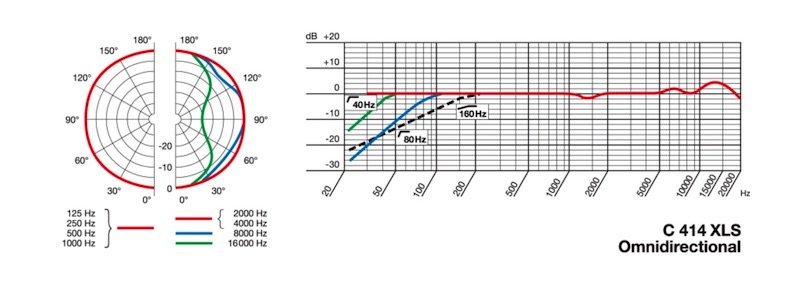
Omnidirectional microphones are immune to proximity effect and off-axis coloration, making them extremely capable of recording sounds as naturally as possible. As such, omnidirectional microphones are a great choice for recording ambient/room sounds, and sources at a distance—so they're commonly used for room recordings, or in classical music as part of mic arrays for large ensembles or orchestras. Moreover, Omni-pattern microphones are very adept at handling vocal plosives (sudden pops caused by bursts of energy coming from the mouth of a singer/speaker) making them a good option for a vocal mic if you're in a quiet, controlled environment.
However, the strength of the omnidirectional polar pattern is also a weakness when it comes to live performance environments. Because this type of microphone picks up sound from all directions, it is highly prone to feedback and environmental noise and it is best to avoid using it in such situations.
Neumann's KM 183 is a true Omni pattern mic commonly used in classical music recording. Also, Warm Audio's WA-84, a favorite of ours, has a switchable capsule—allowing you to use it for either cardioid or an omnidirectional response.
Polar Patterns Explained: Bidirectional / Figure-8
Figure-of-eight or Bidirectional pickup pattern picks up sounds equally well in front and behind the diaphragm, but cancels everything coming from the sides. Thus, the areas of complete silence (aka null points) in this pattern are positioned at 90º and 270º. True pressure gradient microphones (which include all ribbon mics) naturally exhibit this pattern.
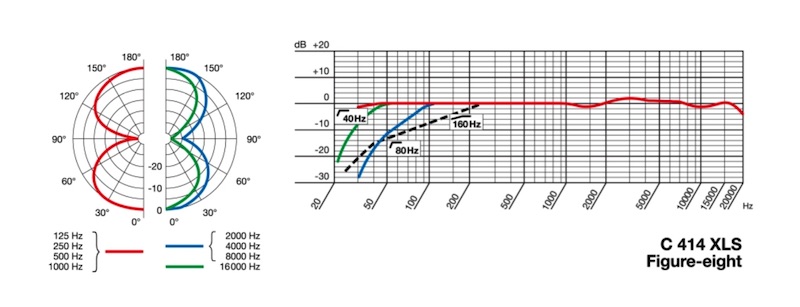
Bidirectional microphones by definition have a side-address design and are extremely vulnerable to the proximity effect, meaning that one needs to be very mindful when positioning the microphone in order to achieve the most natural sound.
In terms of application, the figure-of-eight shape makes microphones employing this pattern incredibly well-suited for interviews, podcasts, and radio broadcasts where two speakers are facing each other. Figure-8 mics can also be excellent in stereo miking applications, such as M/S and Blumlein techniques—though we'll talk more extensively about miking techniques in a future article. An excellent example of a microphone with a bidirectional polar pattern is Shure's KSM353/ED.
Polar Patterns Explained: Cardioid
A unidirectional cardioid pattern (whose name indicates its heart-shaped quality) is by far the most common in the world of microphones. It is very sensitive to the sounds in front of it, a bit less sensitive to sources coming from the sides (usually around 6dB quieter at 90° and 270°), and it rejects anything that hits it from the back. This overall insensitivity to sound waves coming from the rear is the result of a carefully-designed acoustic labyrinth, which in fact is what gives this polar pattern its memorable shape.
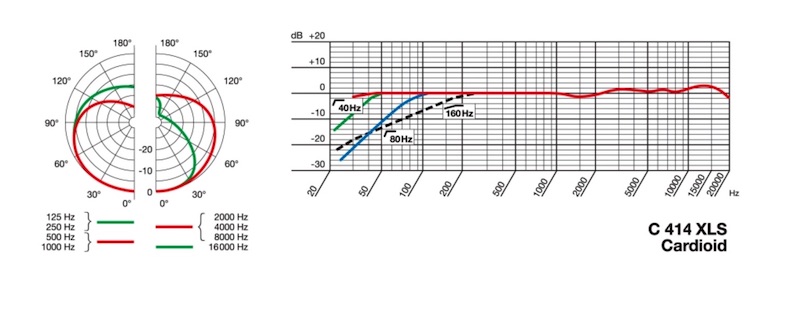
Built utilizing the pressure-gradient principle, microphones with cardioid polar patterns are susceptible to proximity effect, although not nearly as much as bi-directional microphones—so it is still important to find the right distance between the capsule and the source.
Cardioid polar patterns are often a popular choice for vocal microphones. They also tend to do exceptionally well in live sound reinforcement situations. In fact, the aforementioned Shure SM58 uses exactly this pattern, as do its siblings SM57 (an excellent mic for drums, guitar cabs, and more) and SM7B (one of the best vocal microphones for music or broadcast). Neumann's popular TLM 102 and TLM 103, both excellent for voice, also exhibit a cardioid response.
Polar Patterns Explained: Supercardioid / Hypercardioid
Supercardioid and hypercardioid patterns are quite similar to each other and exhibit even narrower uni-directional responses than the cardioid pattern. They are most sensitive to sounds arriving on-axis, with greater gain reduction at 90º and 270º (-10dB for supercardioid, and -12dB for hypercardioid). Supercardioid's null points are at 127º and 233º, and for hypercardioid they are at 110º and 270º. Also, unlike the cardioid polar pattern, these two do have some minor sensitivity to sounds coming from the back. This is known as a lobe of sensitivity. The lobe in supercardioid pattern is about 10dB less sensitive compared to its on-axis response, while in the case of hypercardioid it is about 6dB less sensitive. Both are also subject to proximity effect.
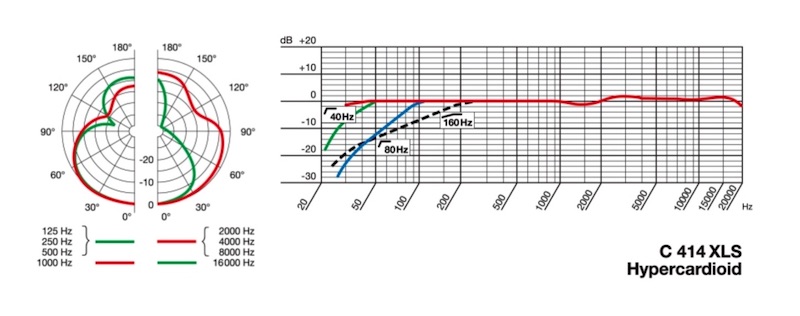
The increased directionality of supercardioid, and hyper-cardioid microphones makes them a preferred choice for film sound. Often these shapes are further enhanced with special interference tubes to make shotgun/lobar polar pattern microphones.
Notably, Sennheiser's E 906, a spectacular mic for guitar cabs, utilizes a super-cardioid pickup pattern.
Polar Patterns Explained: Shotgun/Lobar
As mentioned above, the shotgun/lobar pattern is extremely directional. It is created by means of combining supercardioid and/or hypercardioid pickup patterns with intricately-designed acoustic labyrinths (interference tubes). The achieved polar pattern displays extreme sensitivity at the on-axis 0º position, 18dB sensitivity reduction at the sides, and roughly 10dB less gain in the lobe area. This nearly surgically directional behavior is what makes them a go-to for film and TV production—where it is absolutely crucial to be able to hone in on a specific sound source while rejecting as much environmental noise as possible.
Sennheiser's MKE 600 and Rode's NTG2 are a couple of excellent examples of shotgun microphones at a great price.
Polar Patterns Explained: Subcardioid
The Subcardioid (aka wide cardioid) polar pattern is not particularly common, but you may encounter it, and thus it is worth a mention. On a graph, it appears to be something between omnidirectional and cardioid shapes. It is considered to fall into the unidirectional pattern category since it is most sensitive to sounds coming at the on-axis position. It displays around 3dB reduction in sensitivity to the sides and 10dB reduction at 180º position. Since it operates on the pressure gradient principle, proximity effect is unavoidable.
It is important to acknowledge here that even microphones with cardioid patterns generally start exhibiting subcardioid response at lower frequencies, while mics with omnidirectional patterns do so at higher frequencies.
Polar Patterns Explained: Boundary/PZM
Despite being extremely widespread in use, boundary/PZM (Pressure Zone Microphone) is a very specific polar pattern that doesn't get mentioned as often as the rest.
Semicircular or hemispherical in shape, the boundary/pzm pattern can be adapted from any other directional pattern strictly by means of a particular acoustic labyrinth. In order to be used, these microphones are most effective when placed directly on a flat surface like a wall or a table, not dissimilar to how contact mics are used. However, unlike contact microphones, boundary mics don't pick up the mechanical vibrations of the surface. This design facilitates phase coherence by forcing the reflections of sound waves hitting the microphone from the rear to arrive at the capsule simultaneously with the direct sound. The PZM polar pattern is also resistant to feedback and displays almost no coloration.
Pressure Zone Microphones are suitable for a wide range of applications such as miking acoustic piano in the studio or live, amplifying a conference table, a speaker on stage, a multiple-person stage performance such as a theater play, or a room tone. A good example of a boundary microphone is Shure's MX393/O.
Studio Favorites: Multi-Pattern Microphones
Finally, we arrive at what is probably often the most flexible option—multipattern microphones, which allow the user to select the polar pattern to suit the task at hand. Design-wise, this is achieved by installing two or more diaphragms and/or capsules accompanied by different combinations of their amplitude and phase relationships. Alternatively, some multi-pattern microphones rely on a single diaphragm and an adjustable acoustic labyrinth.
Polar pattern options commonly available in such microphones are omni, figure-of-eight, and cardioid, but in some cases, more patterns are offered. Popular among studio and live recording engineers, AKG's C414 is perhaps one of the most popular multipattern mics available—having gone through several design iterations until the present day. Given its multiple selectable polar patterns, its built-in pad, and its internal low-cut filters, it is quite simple to tailor to any given miking application. Austrian Audio's OC818 is another excellent example, taking the C414 concept and bringing it up to the current age—allowing for extensive user customizations via dedicated app, even permitting user-definable polar patterns in addition to all of the 414's basic features.
The Shape of Sounds to Come
This sums up our discussion of microphone polar patterns, and if you've read this far, we hope that most or at least some of your questions about the subject have been answered. It has to be mentioned, though, that although you may have a better understanding of how various directional patterns differ from one another, and what are the likely applications of each, it is still tremendously important to experiment—try different options yourself to deepen your understanding, and to keep learning over time. In the world of recording, you can talk all day long...but we all know that no words can do justice to the actual experience.




